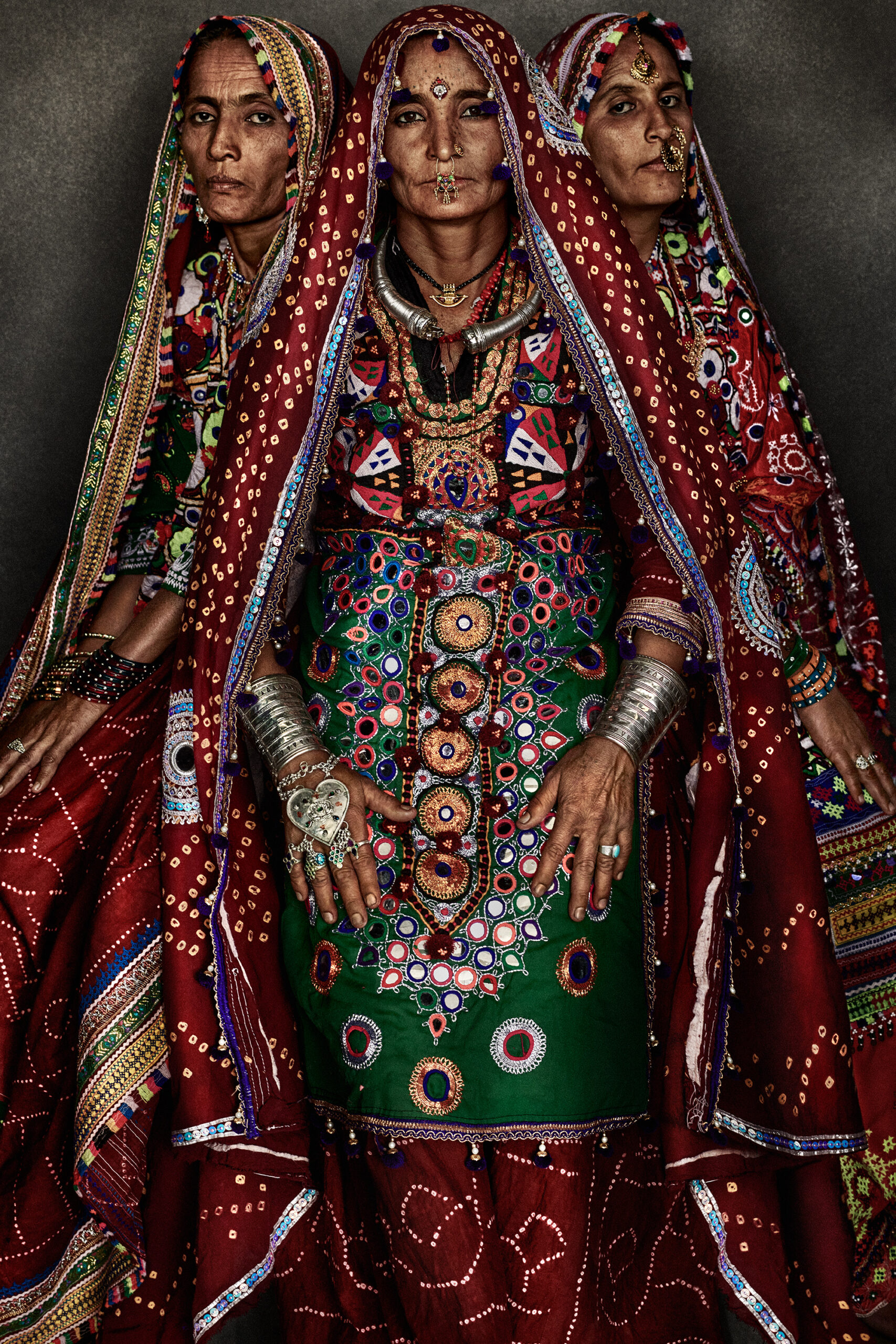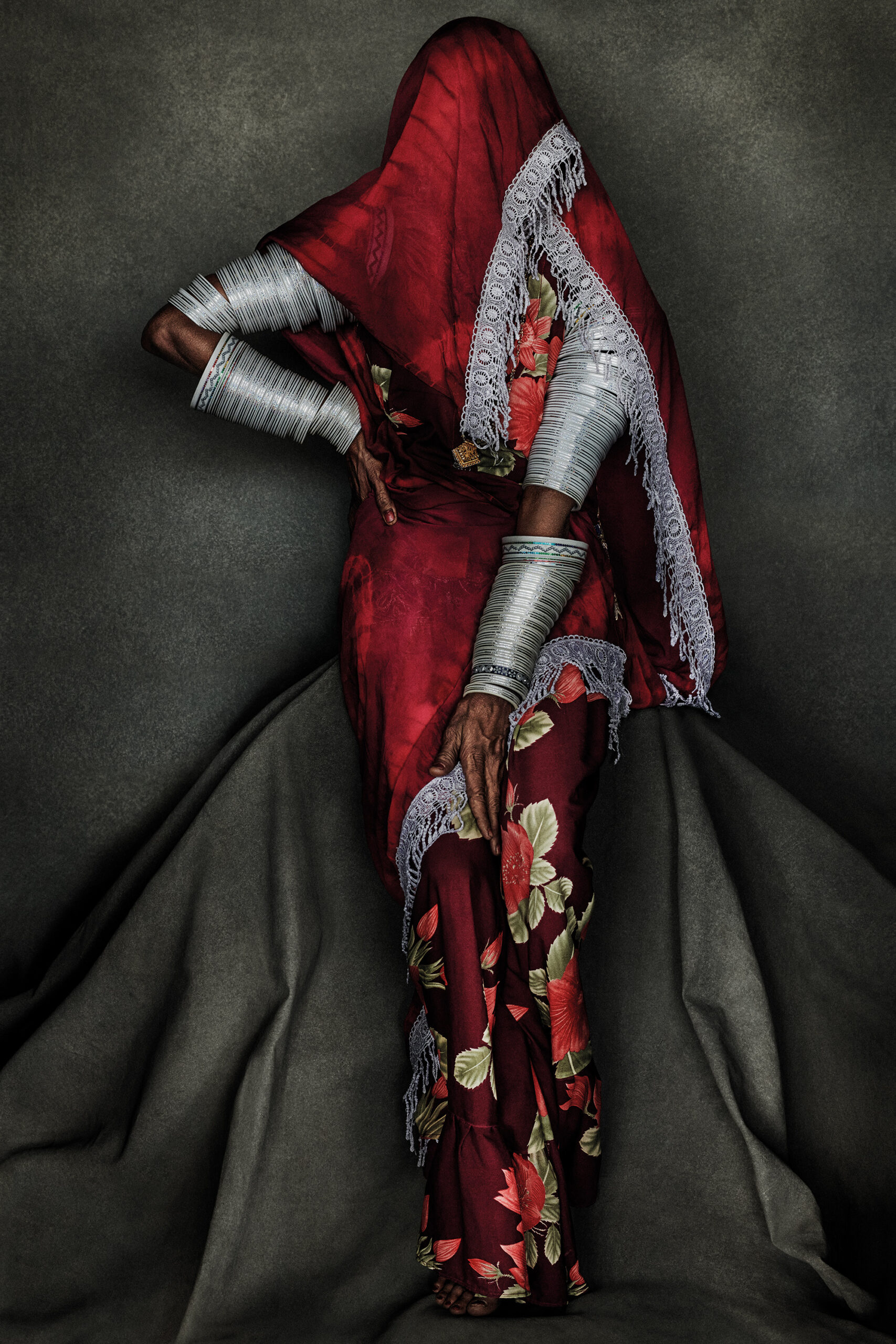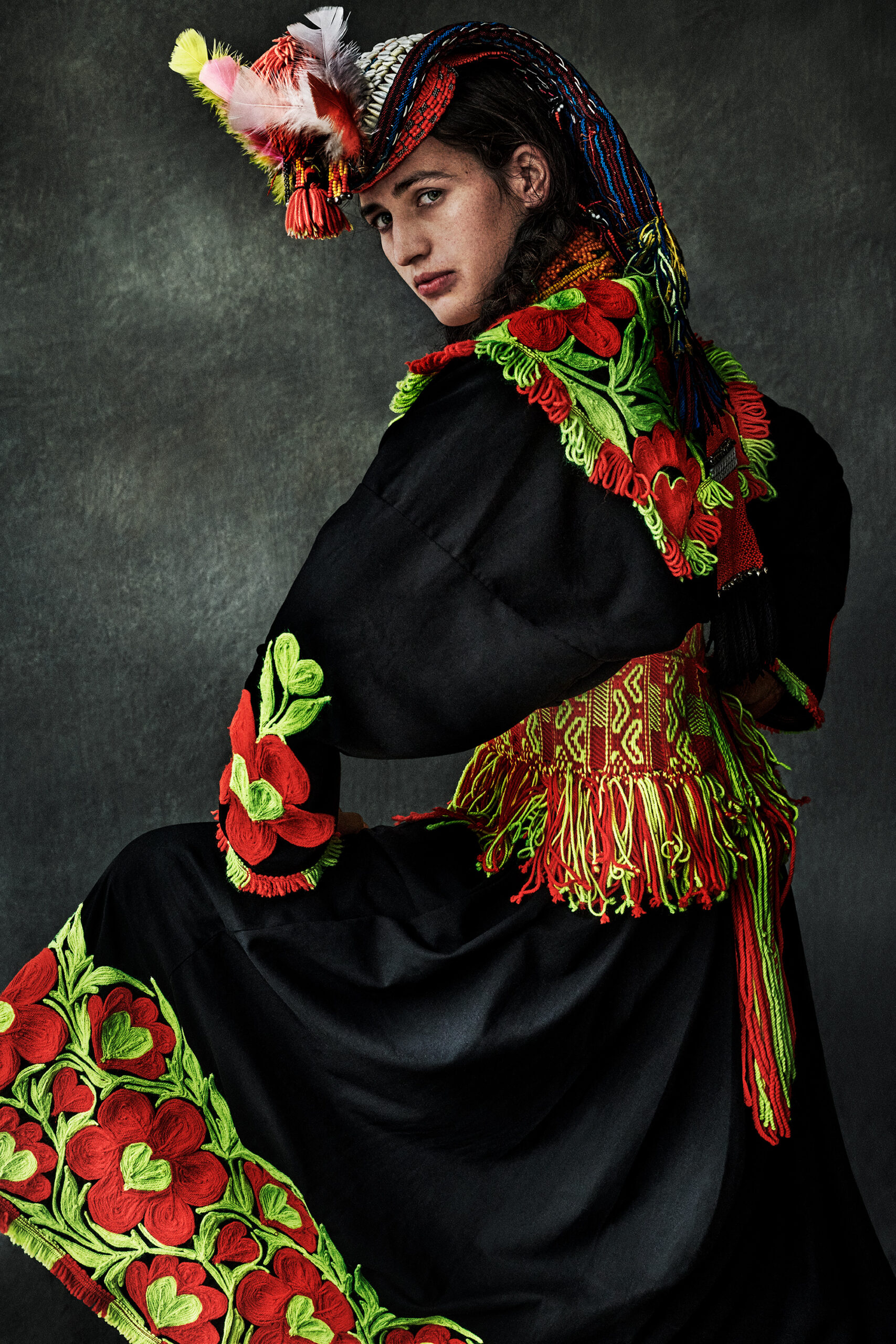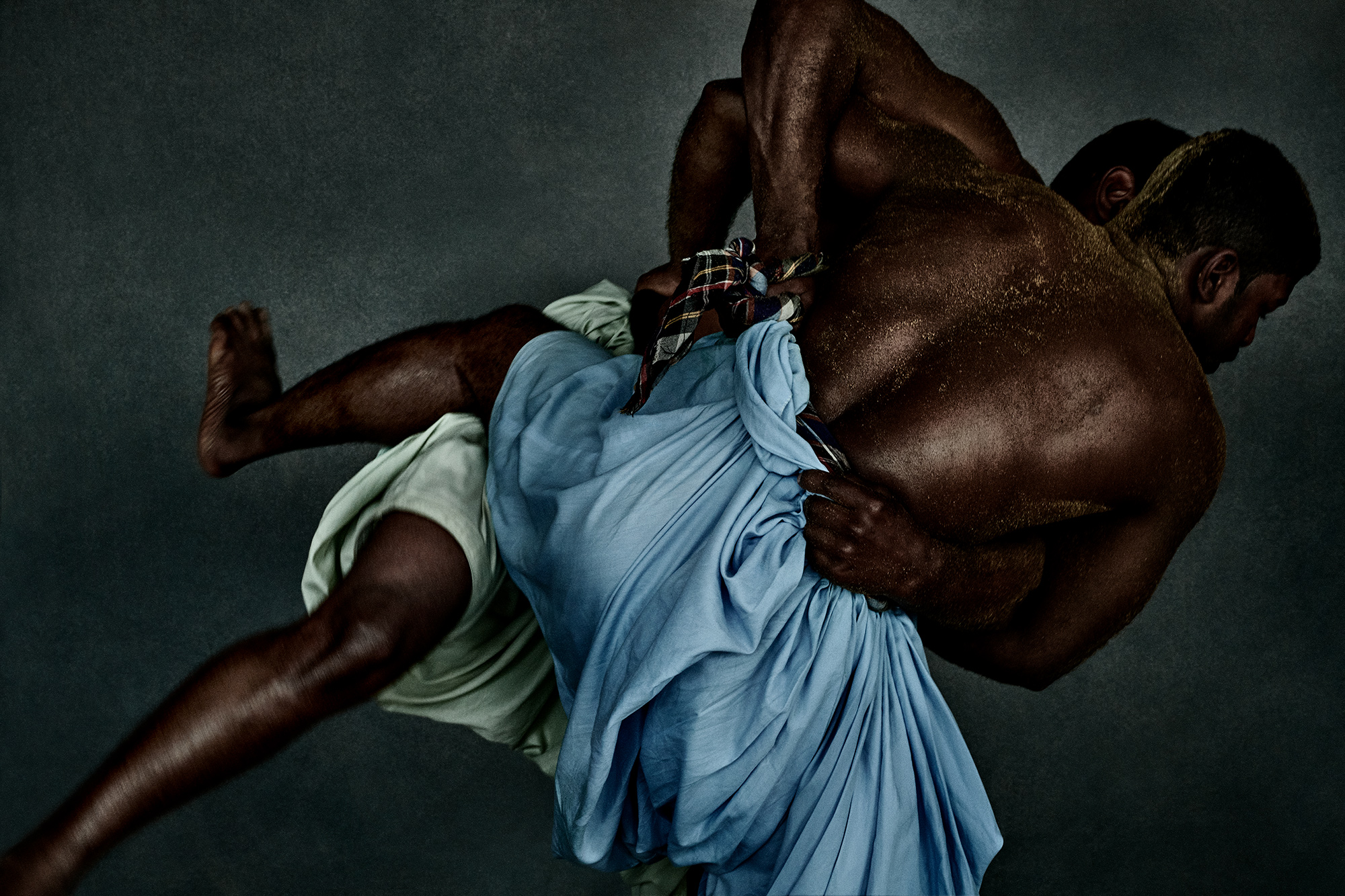Mario Testino
A Beautiful World
Comes to Pakistan
A Beautiful World
Comes to Pakistan

Mario Testino is one of the world's most iconic photographers and is known as one of the best portraitists of our time. His lens have immortalized royalty, supermodels, and famous personalities.
His latest project, A Beautiful World, takes a more personal approach, documenting the beauty of tradition, people, and communities worldwide.
A Beautiful World is a visual journey that focuses on the expressions of various communities through their traditional clothing and customs. Testino’s goal is to highlight the beauty and significance of these traditions, demonstrating how they connect people to their history and culture.
Invited by JS Bank, Mario explored the cultural diversity of Pakistan. From meeting Kalash women and Sindhi musicians to photographing presidential guards and Sehwan devotees, Mario immersed himself in the country’s rich heritage. His photographs highlight Pakistan’s rich history and cultural depth.
"Pakistan is a country that exceeds all expectations."Mario Testino
Known as one of the best portraitists of our time, Mario Testino is travelling the world working in his most personal images to date. A Beautiful World, as his latest series is called, is a journey through the markings of identity, through traditions and transgressions.
On his visit to Pakistan, invited by JS Bank, Testino met Kalash women and the presidential guards, Sehwan devotees, Sindhi musicians and Rabari people, to name a few. Through the lens of the artist, each community and individual shines in the expression of their identity, each a testament of Pakistan’s history and cultural wealth.
Featured prominently in the first exhibition of A Beautiful World, at Palazzo Bonaparte in Rome, Pakistan became an important subject for Mario Testino, who here shares his thoughts on the country and our beautiful world.
What similarities do you find in your work as a fashion photographer and this new
immersion in the world of tradition? What has changed?
The main change has been of theme and subjects, as in A Beautiful World my objective is documenting people and communities and bringing out the beauty of their traditional attire. However, something we must never forget is that fashion comes from these costumes, from that same desire of expressing identity. While fashion moves with the rhythm of commerce and of the world today, these outfits were designed to last and be for each group a permanent sign of belonging.
Can you discuss how your own country’s traditions were an inspiration for A
Beautiful World? Are there other places in the world that have inspired this art
journey?
On one trip to Peru, almost twenty years ago, while working for British Vogue, I discovered an archive of traditional dresses in a dance school. They were from different regions of Cusco and used for festivities. I had searched before for the costumes of my country and having this incredible collection in front of me, I realised there was not a proper archive of dresses and their meanings, so I started documenting at the beginning just with that in mind. When the pictures were presented in Lima, my city of birth, the reaction was amazing. People were feeling proud of something they had taken for granted before, the beauty of the living culture that surrounded them. It was a rediscovery of sorts, people embracing their patrimony.
In my fashion work, when doing Special Editions of different countries, I tried to incorporate what made each place unique. I would recreate traditional costumes with contemporary clothes, sometimes. Countries like Brazil, China or Japan have been a great influence that way.
After seeing so many places and meeting such different people even living in the
same country, how would you define identity? Also coming from a multicultural
country, do you believe it possible to equate identity and nationality?
Most of the clothes I photograph come from the idea each community has of belonging. People, no matter where they come from, want to share who they are and what defines them, be it their country, religion, a festivity they love to celebrate or even their jobs. Presidential guards are a great example, as they are always dressed in a official manner and have that distinctive military pride. However, each country’s uniform has its own world.
Of course, like my own country, some places hold many identities. For example in Kenya I have photographed the Samburus, the Pokots, the Maasai, among others. They all dress in a particular way and in Kenya everyone recognises each community. But the idea of belonging to one country despite the differences is also very powerful. I have photographed football fans as well, and I have seen how important it is for them to be wearing and showing the colours of their countries.
Why did you want to add Pakistan to the project A Beautiful World? Was there any
particular inspiration or invitation?
I have always been fascinated by the history of Pakistan, a country created to be home of a shared religion. I had visited India before, and as I am aware of their shared history, I was very keen on discovering their differences and the culture of Pakistan. I found a place even more incredible than what I had imagined. My team and I were invited by JS Bank and we were gladly surprised by their understanding of the project reflected on how they guided us through the country, identifying the kind of communities and groups I wanted to photograph. They were generous in their understanding of what we needed for the trip and our work days, which start early and can be very intense. Pakistan is a country that exceeds all expectations.
Are there any similarities you have noticed between our nations or among other
indigenous communities of the world?
It is quite incredible how you find similarities wherever you go. In Peru, when looking at the relics of certain cultures I would see similarities to Chinese artefacts. I always thought it so strange to find such common ground between two countries so far away. When I photographed the Kalash women in Islamabad, I was amazed by their use of wool and how similar it was to Peru’s, where alpaca wool has been part of people’s lives for millenia. In both countries, black plays an important role in bringing out the brightness and vividness of other colours.
Another even more valuable thing in common is that those traditional garments are still worn in both Pakistan and Peru. They are not in a museum or reserved for special ceremonies, they are part of daily life. I find it very magical that in a world where everyone strives to look the same, some people and certain countries still hold dear expressions of their history.
Of the three images of Pakistan people included in your current show, two are of the
Thari women. Can you share with us what was it about them that caught your eye?
Thari women have a perfect sense of haute couture. They made me think of dresses made to measure and created from a designer’s personal perspective to enhance the woman wearing it; designed to make her look regal and beautiful. Thari women and their outfits have that same sophisticated energy. They cover themselves from men as a way of modesty, which has its own kind of elegance, rooted in discretion and in appreciation for not revealing themselves all at once but in due time.
When discussing the exhibition, you have mentioned many times it is an ongoing
project. What is next for you and for A Beautiful World?
I think I’m going to carry on doing this project for as long as I can, for as long as life allows it. I like to think we have a mission in our lives. When I was young, I never imagined myself as a photographer and despite that life has given me so much appreciation for my work. Nowadays, I am putting all that knowledge into this project, documenting something incredibly valuable that is fading away. We live in a world that consumes rapidly and moves fast from one thing to the next. A Beautiful World is the way I found to let us appreciate the beauty of these costumes a bit longer.
We have seen the comments in the press and in social media, are there any
reactions to the A Beautiful World exhibition that surprised you or that you specially
appreciated?
As a fashion photographer I got used to getting a reaction to my pictures, many people seemed to really enjoy them, to find something of themselves in them. When I was starting A Beautiful World, as we do when beginning something new, I had insecurities about how it would be perceived. I worked very hard in presenting the exhibition so the message and intention would be clear, and to show what had impressed me so much about the portrayed communities. And I feel people have really responded to that, to the idea that all of us, with all our differences, are part of the same world, and that there is so much we share with each other, as our necessity to belong somewhere, to feel part of a community, and to protect, enjoy and love our country as much as we can.
The inclusion of Pakistan in the A Beautiful World project was made possible through the generous support of JS Bank. Their dedication to honoring and preserving Pakistan's rich heritage and traditions has brought to life an unforgettable experience that beautifully showcases the profound cultural tapestry of this remarkable country.




With the support of JS Bank, Mario Testino’s journey through Pakistan has become a significant chapter in the A Beautiful World project. His photographs offer a window into the richness and beauty of Pakistan’s cultural heritage, preserving these moments for the world to appreciate.